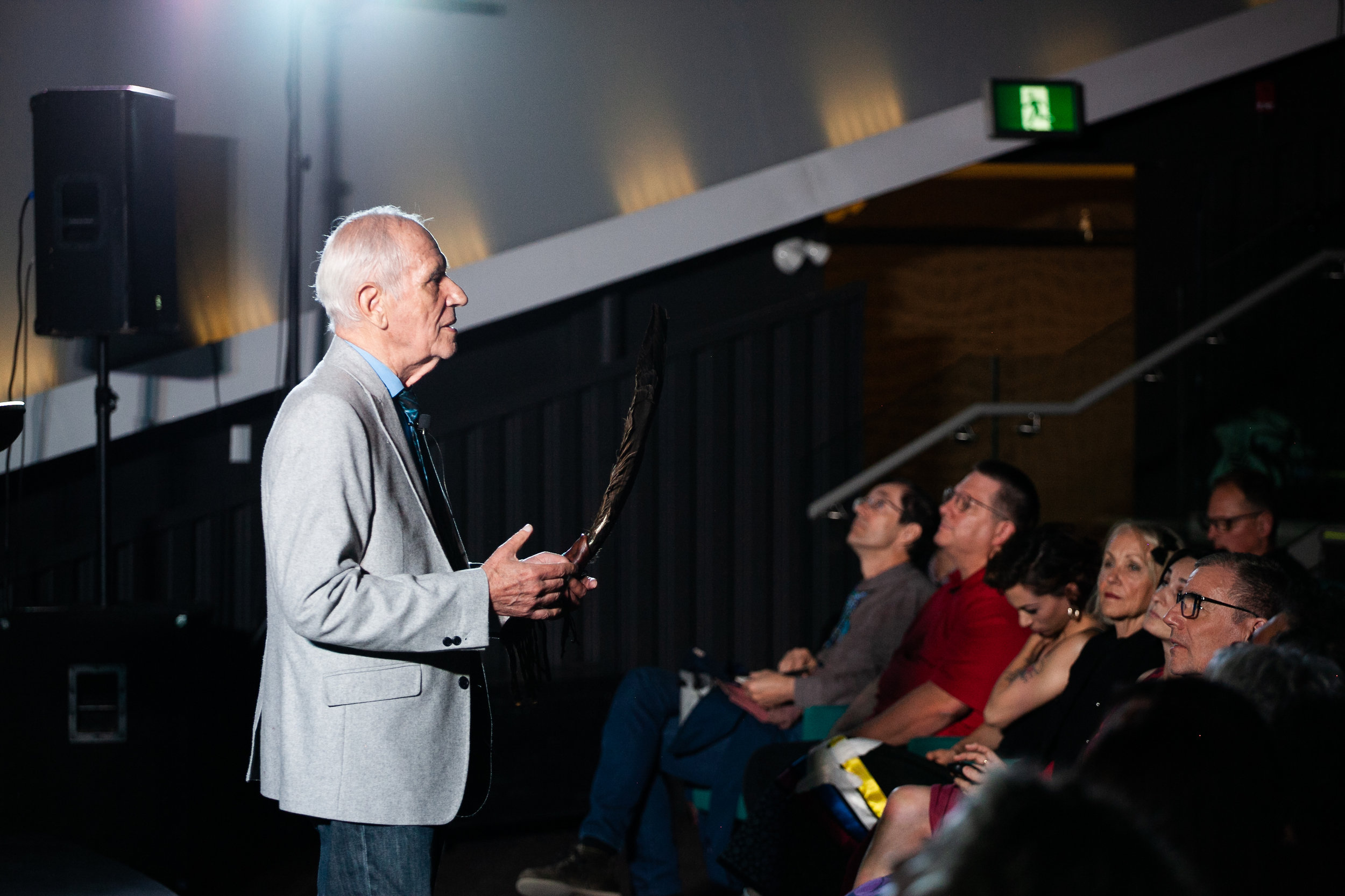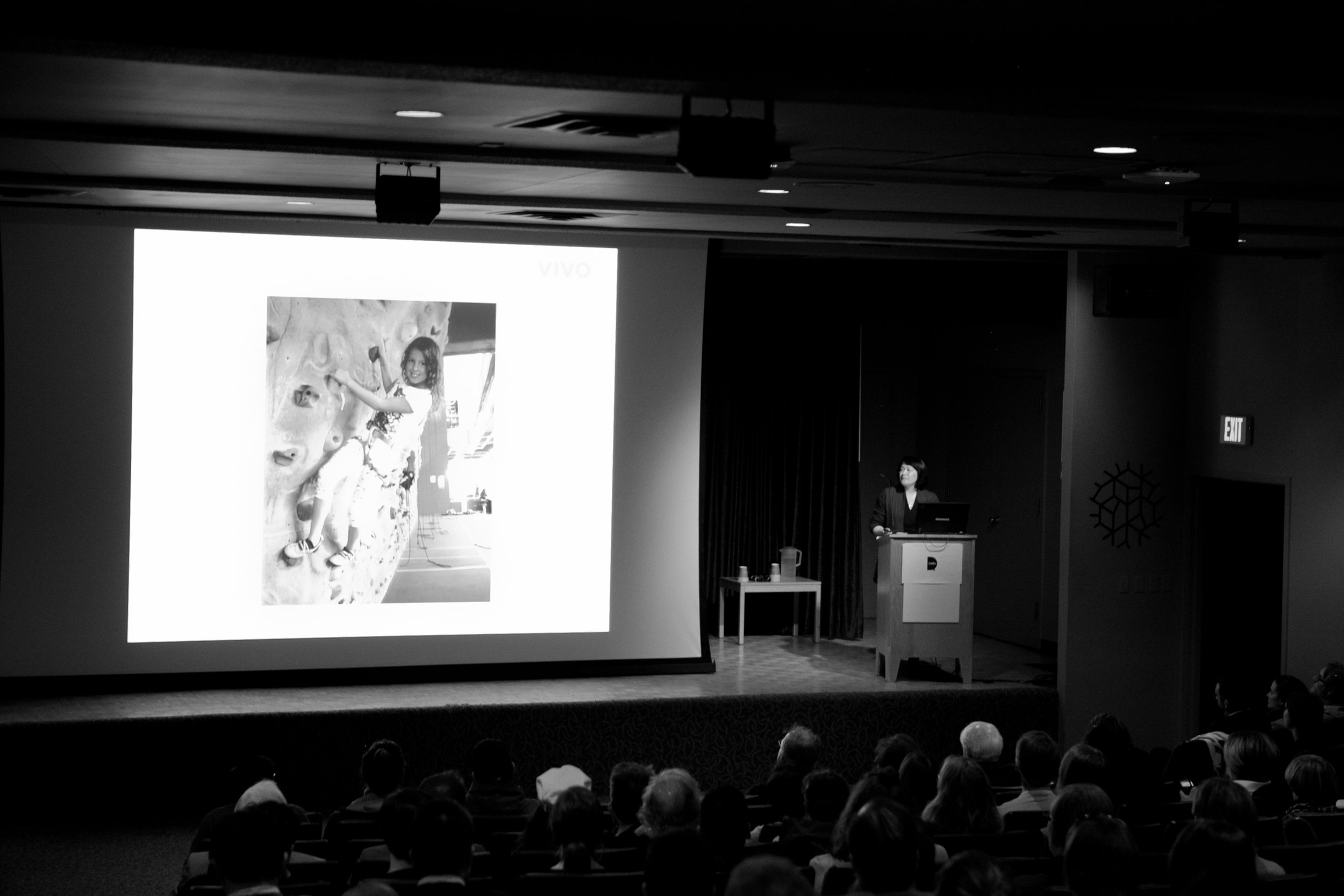Panelists:
Marianna Vaidman Stone is the Deputy Director of Gehl Institute, an organization focused on getting public life on the agenda of cities. They study the experience of public places and encourage cities to transform by making public life a driver for design, policy, and governance. Marianna joined Gehl Institute in April 2018. Prior to this, she served as Chief of Staff to New York City Council Member Daniel R. Garodnick, whose district covered some of New Yorks’ premier public spaces. She worked on the development of a zoning framework that’s expected to generate hundreds of millions of dollars for public realm projects in East Midtown. She currently serves as an Alternate Director on the public body charged with administering those funds. Before moving into public sector and advocacy work, Marianna was a commercial litigator at Debevoise & Plimpton, a major New York law firm.
Cowboy Smithx is an Award Winning filmmaker of Blackfoot Ancestry from the Piikani and Kainai tribes of Southern Alberta, Canada. Cowboy is the founder and curator of the highly acclaimed International Indigenous speaker series “REDx Talks." He also serves as the Artistic Director of the Iiniistsi Treaty Arts Society, a non-profit organization dedicated to activating the true spirit and intent of Treaty #7. Cowboy writes, directs and produces film works in documentary, narrative, music video and experimental. He is currently working in Indigenous education, Cultural consultation and Youth work around the world. Cowboy has been featured as a keynote presenter at over 150 conferences, symposiums and festivals across the globe. Cowboy facilitates dozens of interactive workshops for professionals, artists, youth and elders. Cowboy is also the founder of the Elk Shadows Performing Arts Clan and the Noirfoot School For Cinematic Arts.
Brigitte Shim, along with her partner, A. Howard Sutcliffe, are both principals in the design firm Shim-Sutcliffe Architects. Shim-Sutcliffe’s built work explores the integration and interrelated scales of architecture, landscape and furniture and fittings. To date, Shim and Sutcliffe have received fourteen Governor General’s Medals and Awards for Architecture from the Royal Architectural Institute of Canada and an American Institute of Architects National Honor Award along with many other professional accolades for their built work ranging from projects for non-profit groups to public and private clients. Brigitte Shim is a Professor at the John H. Daniels Faculty of Architecture, Landscape and Design at the University of Toronto engaged in core design studios, advanced design studios as well as teaching courses in the History and Theory of Landscape Architecture. She was the Eero Saarinen Visiting Professor at Yale University’s School of Architecture (2014, 2010, 2005) and an invited visiting professor at the Ecole Polytechnique Federal de Lausanne, Harvard University’s Graduate School of Design, the University of Auckland’s School of Architecture and Planning within the National Institute for Creative Arts and Industries and others. In 2013, she was the Somerville Visiting Lectureship at the University of Calgary’s Faculty of Environmental Design. She is a strong advocate for design excellence and has served on numerous international, national and local design juries including the 2007 Aga Khan Architecture Award Master jury and is currently serving on their Architecture Award Steering Committee. In January 2013, Brigitte Shim and her partner A. Howard Sutcliffe were both awarded the Order of Canada, “for their contributions as architects designing sophisticated structures that represent the best of Canadian design to the world.”
Nabeel Ramji represents an organization "Bricolage Calgary" that advocates for accessible design and Inclusion for All citizens in Calgary. He's consulted on the creation of RK Access, a service of Riddell Kurczaba focused on barrier-free design that aims to make architecture more accessible to all. As an Accessibility Infrastructure Specialist, Nabeel provides a user-based perspective on accessibility design reviews. He has been a citizen-at-large on the City of Calgary’s Advisory Committee on Accessibility for the past four years, and has served as a member on the Premier's Council on the Status of Persons with Disabilities since September 2017. He received a Senate 150th Anniversary Medal at Parliament Hill for his efforts to heighten awareness for accessibility.
Amanda Kolson Hurley writes about architecture and urban issues. She is a Senior Editor at CityLab, the city-focused publication of The Atlantic. Her writing has appeared in Architect, Architectural Record, Landscape Architect, NextCity, Foreign Policy, The Times Literary Supplement, Wallpaper and The Washington Post among others. She was awarded the Sarah Booth Conroy Prize by the D.C. chapter of the American Institute of Architects. Her essay “Welcome to Disturbia,” on why Americans of the 1950s and ’60s thought the suburbs were making them sick, was one of the 10 most-read articles last year on Curbed (Vox Media). Her forthcoming book, titled Radical Suburbs, will be released in April. (Find it at Shelf Life.)
Don Mulligan was Director of Transportation Planning at The City of Calgary, for nine years, and is passionate about sustainable urban transportation. Don was the transportation lead for the 2009 Calgary Transportation Plan, was project sponsor for Calgary’s Cycling Strategy, Complete Streets Policy and Pedestrian Strategy. He played a key role in approvals for Calgary’s Peace Bridge and downtown cycle track network. Don was also strategic planning lead for the Green Line LRT project. Now retired, Don lives next to the LRT station in Kensington, one of Calgary’s most walkable communities.
Giovanna Borasi is an architect, editor, and curator. She joined the Canadian Centre for Architecture (CCA) in 2005 as Curator for Contemporary Architecture, and in 2014 she was appointed Chief Curator. Borasi’s research focuses on contemporary architecture discourse, with a particular attention to alternative ways of practicing and evaluating architecture and how environmental, political, and social issues influence today’s urbanism and built environment. Exhibitions and publications by Giovanna Borasi include What About Happiness on the Building Site? (2017); Besides, History: Go Hasegawa, Kersten Geers, David Van Severen (2017); The Other Architect (2015); Imperfect Health: The Medicalization of Architecture (2012); Journeys: How Travelling Fruit, Ideas, and Buildings Rearrange our Environment (2010); Sorry, Out of Gas: Architecture’s Response to the 1973 Oil Crisis (2007); and Environ(ne)ment: Approaches for Tomorrow (2006). Borasi studied architecture at the Politecnico di Milano, after which she worked as an editor for Lotus International (1998–2005) and Lotus Navigator (2000–2004), and was Deputy Editor in Chief of Abitare (2011–2013). Before joining the CCA, Borasi co-curated House Sweet Home, Different Ways to Live, Spazio Ventisette, Milan (2000), and collaborated on several exhibitions including Asfalto, Il carattere della città at the Milan Triennale (2003), and Notizie dall’Interno, the Italian Pavilion for the 9th Architecture Biennale in Venice (2004), both with Mirko Zardini. Borasi has written widely on contemporary architecture, and her work has appeared in publications such as ARCH+, 2G, Cartha, and PLOT. She has served on international juries and regularly speaks at symposia and conferences.










































































